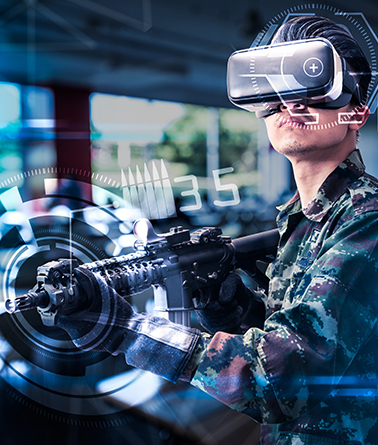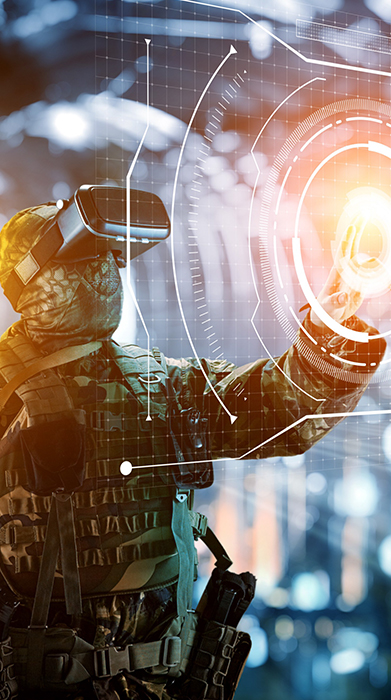Taking military training up a notch with Simulation technology
The defence sector has always had emerging technology in the vanguard for imparting combat training. And the advent of augmented reality, virtual reality, and mixed reality and gamification has opened newer avenues in training environments for the service personnel.
The deployment of Digital Reality in Defence
As per a Deloitte report, the US Department of Defence spends close to $14 billion annually on synthetic digital training, which amounts to 2% of the total US military spending in a year. On the other hand, the spending on virtual reality development has been roughly around $6.4 billion in the US, $5.1 billion in the Asia-Pacific region and a total of $3 billion in Europe, Middle East and Africa combined. On the global front, the AR market in the military domain is estimated to reach US$ 1,797.5 million by the end of 2025, escalating at a CAGR of 17.4% during the forecast period. The global VR market is expected to reach $75 billion by 2021, with China’s demand potentially surpassing 85 million units, crossing the US forecasted demand of 68 million units. These statistics denote a visible rise in the deployment of digital reality in Defence across the globe. As a result, armed forces have made simulation technologies an integral part of their training system, thereby increasing situation awareness, strengthening mobility and enhancing manoeuvrability of the defence personnel.


Augmented and Virtual Reality in Military training
Augmented reality is being increasingly used to tackle challenges like scarcity of information & resources and the challenge of compromised safety. Tactical Augmented Reality (TAR) overlays crucial information within a pilot or soldier’s vision so that it eliminates the need to constantly look at the available panels or devices, thereby increasing situational awareness. Helping soldiers gauge their exact location, as well as the positions of the enemy forces are some of the crucial advantages of TAR. Synthetic training environment or STE combines AR, VR and MR to train soldiers in an immersive manner. As a part of STE, soldiers are put through physically and mentally stressing operational environments, to ingrain a higher level of readiness among them. Additionally, Augmented reality development helps soldiers in getting familiar with sand tables that are used in location based planning of military operations, as well as night vision and thermal sensing.
On the other hand, Virtual reality is used for immersive battlefield recreation and for imparting on-ground medical training. VR is also used to familiarize soldiers with the most complex of vehicles (air, ground and water) by creating an immersive environment, through which they learn navigation and maintenance skills. For battlefield visualization, soldiers are made to wear glasses that create an illusion of depth, thereby enabling them to think of battle strategies. Gamification also presents opportunities to create realistic scenarios to help the soldiers acclimate to combat environments and situations. To reinforce concepts and techniques in the right manner, equipment such as head mounted displays and treadmills are used.
The way forward for the Defence sector with EDIIIE
These are some of the many practical ways in which Digital Reality is bolstering the Defence sector. And at the epicenter of these technological advancements and simulation led reforms is EDIIIE. Armed with cutting edge technology and unmatched experience, we are constantly innovating with the practices of Defence training and have done a technology makeover for the following Defence partners.







.png)































